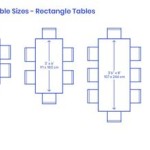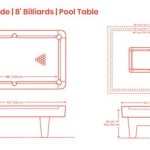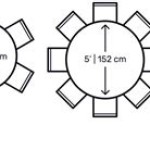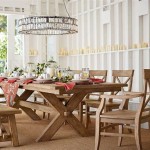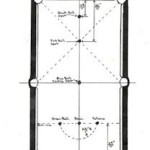Antique English Oak Dining Table and Chairs: A Timeless Investment
Antique English oak dining tables and chairs represent more than just functional furniture; they are tangible pieces of history, reflecting centuries of craftsmanship, design evolution, and cultural shifts. Investing in such pieces is not merely acquiring furniture, but acquiring a legacy, a connection to the past that can enrich a home’s aesthetic and provide lasting value.
The enduring appeal of antique English oak furniture lies in its inherent quality. Oak, a robust and readily available hardwood in England for centuries, was the material of choice for furniture makers. Its strength, durability, and distinctive grain patterns made it ideal for creating pieces that could withstand daily use and the test of time. Today, the patina acquired over decades or even centuries further enhances its beauty, telling a silent story of generations past.
The style of antique English oak dining tables and chairs varies considerably, reflecting different historical periods and design movements. Understanding these stylistic variations is crucial for identifying authentic pieces and appreciating their unique characteristics. Early examples, dating back to the Elizabethan and Jacobean eras, often display bold carving, heavy proportions, and simple, functional designs. Later pieces, from the Georgian and Victorian periods, may feature more refined details, lighter construction, and influences from continental European styles.
Identifying Key Features of Antique English Oak Dining Tables
When assessing an antique English oak dining table, several key features can help determine its age, quality, and authenticity. These include the type of oak used, the construction methods employed, and the decorative elements incorporated into the design.
Oak Species: While the term "English oak" is generally used, several species of oak were commonly used in furniture making. These include *Quercus robur* (English oak or pedunculate oak) and *Quercus petraea* (sessile oak). Distinguishing between these species requires expertise, but understanding that variations exist is important. Knowing if the grain is tight and even, or coarser and more irregular, can give clues to the origin and potential age of the timber.
Construction Techniques: Traditional joinery methods are a hallmark of antique English oak furniture. Mortise-and-tenon joints, dovetail joints, and pegged construction were commonly used to create strong and durable connections. The presence of hand-cut dovetails, as opposed to machine-made ones, is a strong indicator of age and craftsmanship. The method by which the table top is attached to its base is also important. Older tables are often constructed with a system of wooden cleats and wedges, allowing the solid oak top to expand and contract with changes in humidity without cracking.
Table Top Characteristics: The table top itself offers clues to the table's history. Look for signs of wear consistent with age and use. These might include surface scratches, minor dents, and slight variations in the finish. Evidence of water rings, caused by forgotten glasses or spills, can add character and authenticity. Also, examine the edges of the table top. Hand-planed edges are less regular and more rounded than those produced by modern machinery. The presence of breadboard ends, which were used to prevent warping in wider table tops, is another sign of age and quality.
Leg Design and Support: The design of the table legs and the method of support can also help determine its period and style. Early tables might feature substantial, turned legs, while later examples might have more slender, tapered legs. The presence of stretchers, which are horizontal supports connecting the legs, provides added stability. The style and arrangement of the stretchers can also be indicative of the table's age and origin.
Assessing Antique English Oak Dining Chairs
Antique English oak dining chairs, like their table counterparts, exhibit a range of styles and construction techniques that reflect different historical periods. Evaluating the chair's design, joinery, and overall condition will help determine its value and authenticity.
Chair Style and Design: Chair designs evolved considerably over time. Early oak chairs, such as the wainscot chair, were often heavy, boxy, and highly ornamented. As furniture design progressed, chairs became lighter, more graceful, and more comfortable. Look for stylistic features that are characteristic of different periods. For example, the Queen Anne style, popular in the early 18th century, features curved lines, cabriole legs, and vase-shaped splats. Chippendale chairs, from the mid-18th century, are known for their elaborate carving and pierced splats.
Joinery and Construction: The quality of the joinery is particularly important in chairs, as they are subjected to significant stress and movement. Look for tight, well-fitted joints, with minimal gaps or looseness. The use of mortise-and-tenon joints, dovetail joints, and pegged construction is a sign of quality craftsmanship. Examine the seat frame, which is typically constructed with mortise-and-tenon joints. Check the joints between the legs and the seat frame, as these are common points of weakness.
Seat Material and Upholstery: The seat of an antique English oak chair may be made of solid wood, rush, or upholstered with fabric or leather. Solid wood seats are common in early examples. Rush seats, made from woven rushes, were popular in vernacular furniture. Upholstered seats may be original to the chair or may have been replaced at some later date. If the upholstery is original, it can provide valuable information about the chair's age and history. However, it's important to note that original upholstery may be fragile and in need of conservation.
Signs of Wear and Repair: Antique chairs will inevitably show signs of wear and repair. This can include scratches, dents, and minor repairs to the frame or seat. While excessive damage can detract from the chair's value, a certain amount of wear is to be expected. Look for evidence of past repairs, such as replaced spindles, reinforcements, or reglued joints. Well-executed repairs can extend the life of the chair without compromising its authenticity. However, poorly done repairs can damage the chair and detract from its value.
Caring for Antique English Oak Dining Tables and Chairs
Proper care and maintenance are essential for preserving the beauty and value of antique English oak dining tables and chairs. This involves regular cleaning, appropriate environmental control, and, when necessary, professional conservation.
Regular Cleaning: Dusting is the most frequent cleaning task. Use a soft, lint-free cloth to gently remove dust and debris from the surface of the furniture. Avoid using abrasive cleaners or polishes, as these can damage the finish. For more stubborn dirt, a slightly damp cloth can be used, followed by immediate drying with a clean cloth. It is crucial to avoid excessive moisture, as it can penetrate the wood and cause swelling or warping.
Environmental Control: Maintaining a stable environment is crucial for preventing damage to antique oak furniture. Fluctuations in temperature and humidity can cause the wood to expand and contract, leading to cracks, warping, and joint separation. Ideally, relative humidity should be maintained between 45% and 55%. Avoid placing antique furniture near sources of heat or direct sunlight, as these can accelerate drying and fading.
Waxing and Polishing: Waxing can help protect the finish of antique oak furniture and enhance its natural sheen. Use a high-quality beeswax polish specifically designed for antique furniture. Apply the wax sparingly, using a soft cloth. Allow the wax to dry completely, and then buff gently with a clean cloth. Avoid over-polishing, as this can create a build-up of wax that dulls the finish and attracts dust. The application of more modern polishes containing silicone should be avoided as they can be difficult to remove and may damage the original finish over time.
Professional Conservation: In some cases, professional conservation may be necessary to repair damage or restore the furniture to its original condition. Consult with a qualified conservator who specializes in antique wooden furniture. A conservator can assess the condition of the furniture and recommend appropriate treatments. Avoid attempting to repair or restore antique furniture yourself, as improper techniques can cause irreversible damage. Conservation treatments might include cleaning, repairing damaged joints, replacing missing veneer, or refinishing the surface. It's vital that any conservation work is reversible, and that original surface and construction details are preserved whenever possible.
Preventative Measures: The best way to care for antique English oak dining tables and chairs is to prevent damage in the first place. Use placemats and coasters to protect the table surface from spills and heat. Avoid placing heavy objects on the table or chairs, as this can cause stress and damage. When moving furniture, lift it carefully by the frame, rather than dragging it across the floor. Inspect the furniture regularly for signs of damage, such as loose joints, cracks, or insect infestation. Addressing minor problems promptly can prevent them from becoming more serious.
Owning antique English oak dining tables and chairs provides a tangible connection to the past, offering both beauty and functionality to contemporary homes. By understanding the key characteristics of these pieces and following appropriate care guidelines, one can ensure their preservation for generations to come.

Antique Oak Dining Room Cain Seat Chairs W English Mission Pub Table

Victorian Antique English Oak 1880s Dining Table Chairs

Antique English Oak Dining Table With 6 Chairs

Victorian Antique English Oak 1880s Dining Table Chairs

Antique English Barley Twist Leg Dining Table 6 Leather Carved Oak Chairs Furniture By Owner Craigslist

19th Century English Victorian Oak Dining Center Table Erin Lane Estate

Antique English Barley Twist Leg Dining Table 6 Leather Carved Oak Chairs Furniture By Owner Craigslist

English Antique Tiger Oak Jacobean Barley Twist Draw Leaf Table And 4 Sam S Antiques

Antique English Barley Twist Leg Dining Table 6 Leather Carved Oak Chairs Furniture By Owner Craigslist

19th Century Antique Tiger Oak English Victorian Dining Or Game Table

